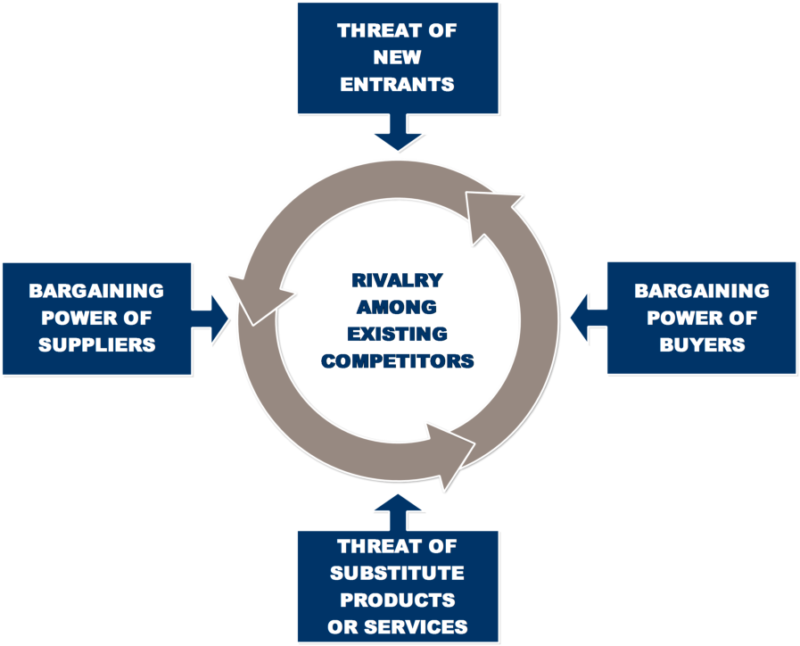The competitive advantage, a concept introduced by Michael Porter in 1985 has become one of the key concepts in management science today. A firm is said to have a competitive advantage when it is implementing a value creating strategy not simultaneously being implemented by any current or potential competitors. Over the past 25 years, a large body of literature engaged in analyzing how organisations can achieve and, more importantly, sustain a competitive advantage. During this process, two different perspectives or ‘schools of thought’ emerged. The first school of thought is that an organization’s competitive ability depends more on the external environment and industry attractiveness. This perspective is referred to as the market based view and was largely triggered by Porter. The second school of thought is based on the internal environment i.e. the fundamental attributes of an organisation, in terms of strengths and weaknesses determine a firm’s ability to compete. Continue reading
Strategic Management Terms
Difference Between Business Strategy and Corporate Strategy
Business Level Strategy Business level strategy concentrates on developing a firm specific model that will allow the firm to gain competitive advantage over its rivals in the industry such as in which it operates. Business strategy would focus on improving its competitive position of a company’s or business unit’s products within the specific industry or market segment that the company and/ or its business units serve. The question explored in business level strategy is: How a company can best be competed in the industry that they are in? For an example Honda motors, Japan has a domestic market for its products and also it operates internationally. Thus business strategy should be crafted focusing on the ways of how it out beat the domestic competitors who operates both in the domestic market and as well as the in the international market like Mazda, Mitsubishi, Suzuki, Toyota and Nissan and competitors in Continue reading
Strategic Management Process – Stages of the Strategic Management Process
The strategic management process aims at delineating the organization’s strategy. It is defined as the process by which managers make a choice of a set of strategies for the organization to achieve efficient functioning and higher accomplishments. It is a continuous process that appraises the business and industries where organization is involved, evaluates its competitors, defines targets to meet all the present and future challenges and finally assesses each strategy periodically. Strategic management is a particular course of action that is meant to achieve a corporate goal. By and large, the owners, founders of the company take the first step of the process. They lay down the structure responsible for carrying out several functions such as providing direction and guidance to the employees, setting up measurable goals with defined time spans and designated duties. Planning, budgeting, acquiring resources, maintaining resources and using follow-up techniques to resolve key issues are key Continue reading
Process Reengineering – History, Definition and Process Steps
The driving force behind all the changes which are taking place in the all the firm of the world are two Cs: customers, competition. The demands of the customers are changing day by day and this change in demand of customers pose new sets of challenges to the firms every now and then and hence firms have to change or modify their offering to customers accordingly. Firms who are able to do it in less time and less cost turn out to be the industry leaders. Firms set their mission and vision statements on the basis of their short term and long term strategy and to attain those goals firms need to adjust themselves with the constantly changing environment. We have seen dominance of Japanese firms in automobile and electronic components, the reason for this dominance of Japanese firms over other firms round the world is their techniques. They change Continue reading
Process Benchmarking – Definition and Steps Involved
Benchmarking involves comparison of one firm’s processes with that of other firm while reengineering is concerned with redesign of operational processes. Benchmarking involves thorough research into the best practices followed by other organisations in the industry where the company operates and it helps in breaking down the organisations’ activities down to process operations and modifies them to the best-in-class for a particular operation. The word benchmarking has been derived from the set of activities used by cobblers to mark the size of the foot of their customers. For measuring the size of the foot they used to ask the customer to put their foot on the “bench” so that they can “mark” the foot using a pen. In Benchmarking processes of one company are compared with the processes of the industry leader to see the practices and the ways in which these industry leaders operate and to modify their own Continue reading
Learning Organization – Characteristics, Benefits and Limitations
The phenomenon of globalization has turned the business world into a global dynamic village for business exchanges. Indeed, competition is becoming increasingly fiercer and simultaneously using Learning Organization as a strategy has become a MUST for companies’ success and development. Adopting such strategy helps organizations to innovate and acquire knowledge in order to survive and thrive in the current rapid changing environment. Some key definitions by distinguished writers on Learning Organization are as follows: “The essence of organizational learning is the organisation’s ability to use the amazing mental capacity of all its members to create the kind of processes that will improve its own”- Nancy Dixon “A Learning Organization is one that consciously manages its learning processes through an inquiry-driven orientation among all its members”- Kim D. “A Learning company is an organization that facilitates the learning of all its members and continually transforms itself”- M. Pedley, J. Burgoyne and Continue reading
